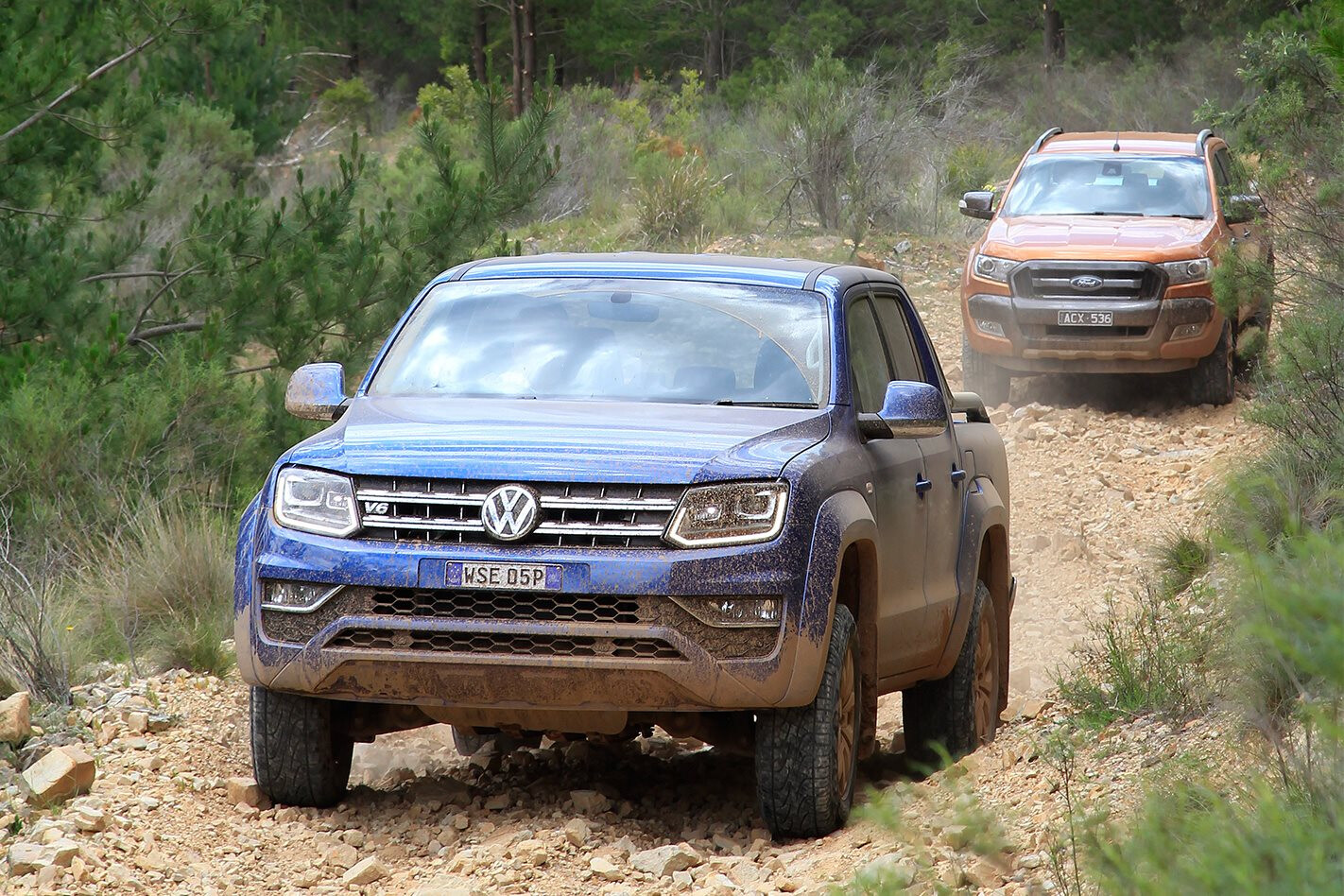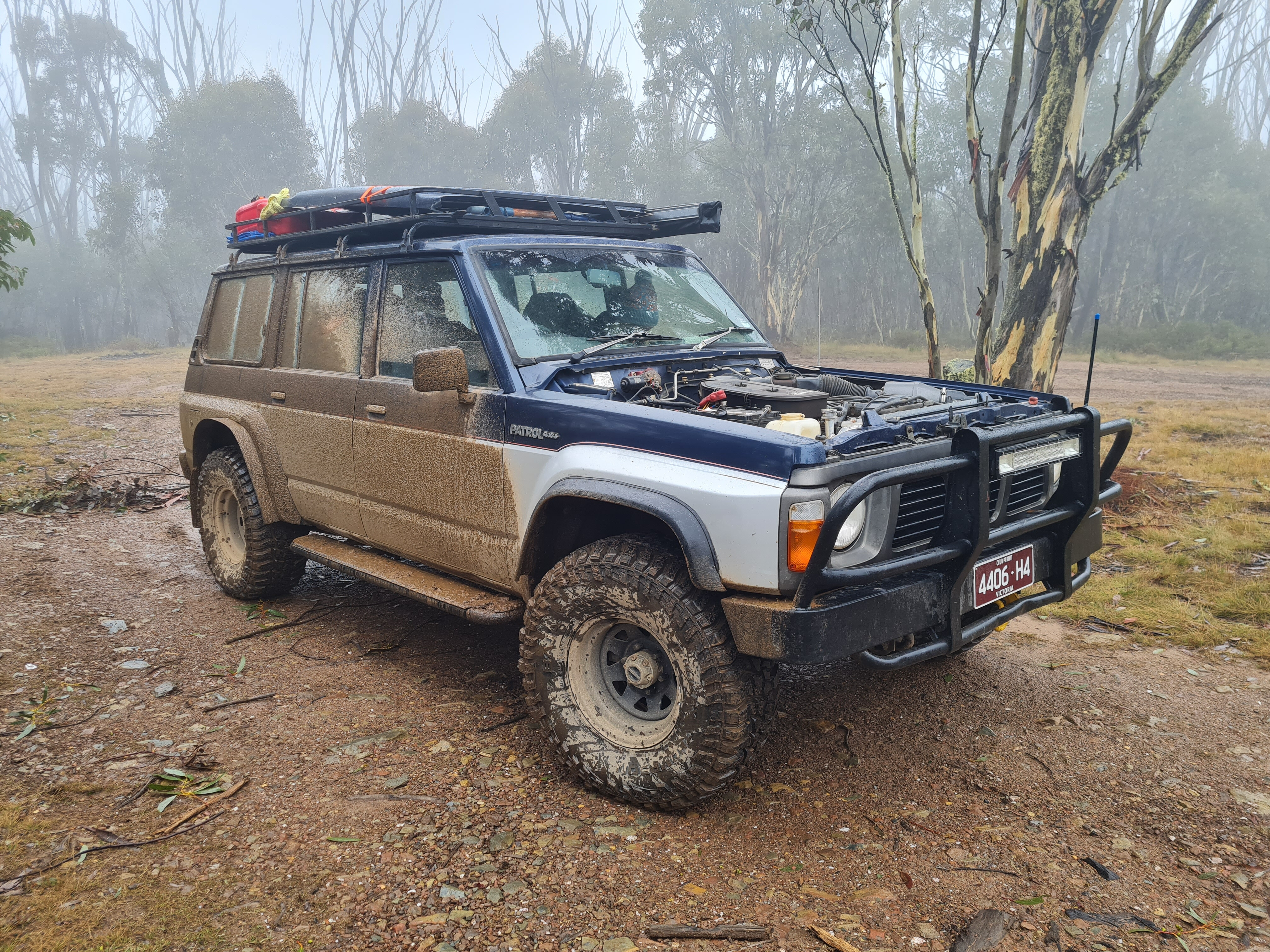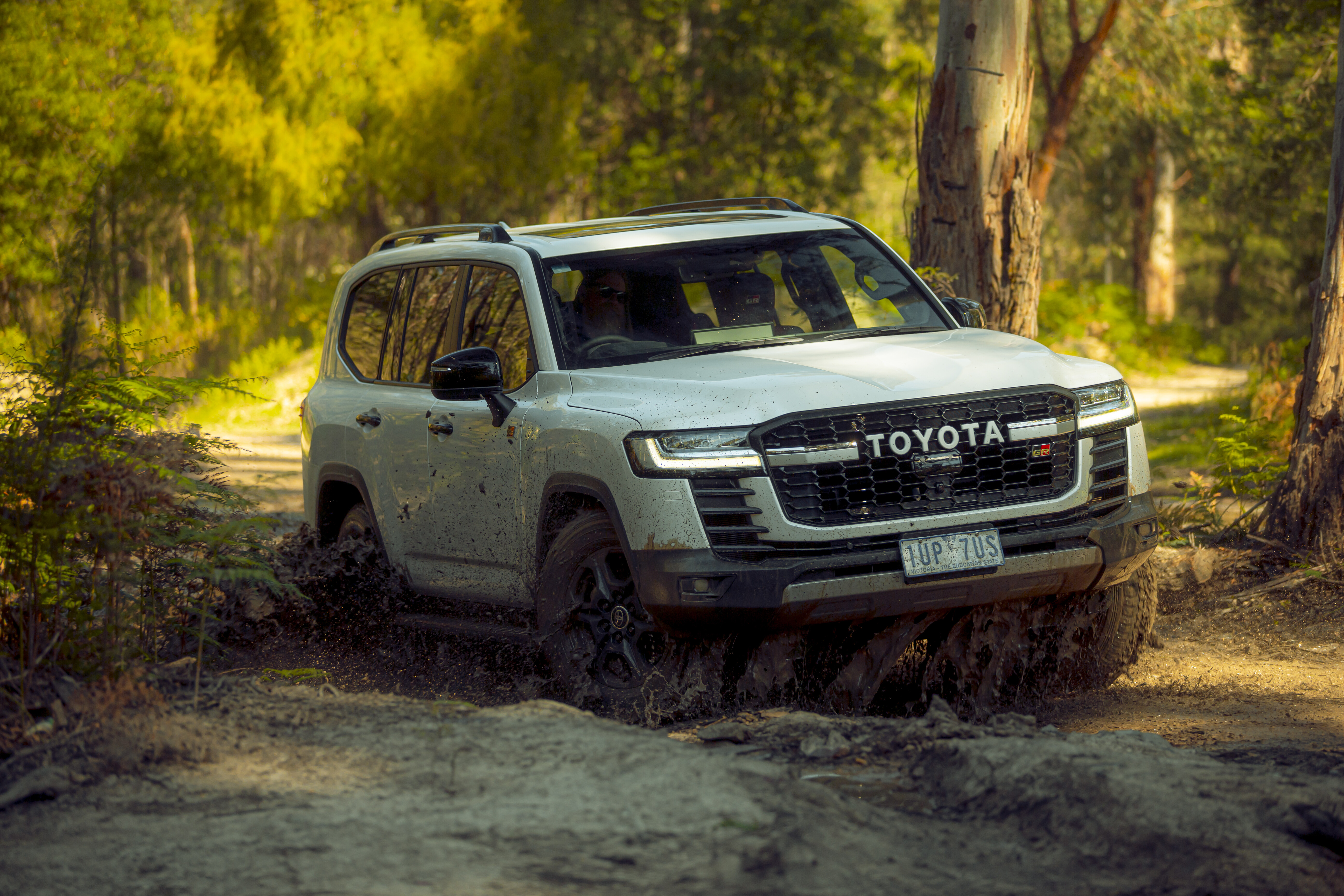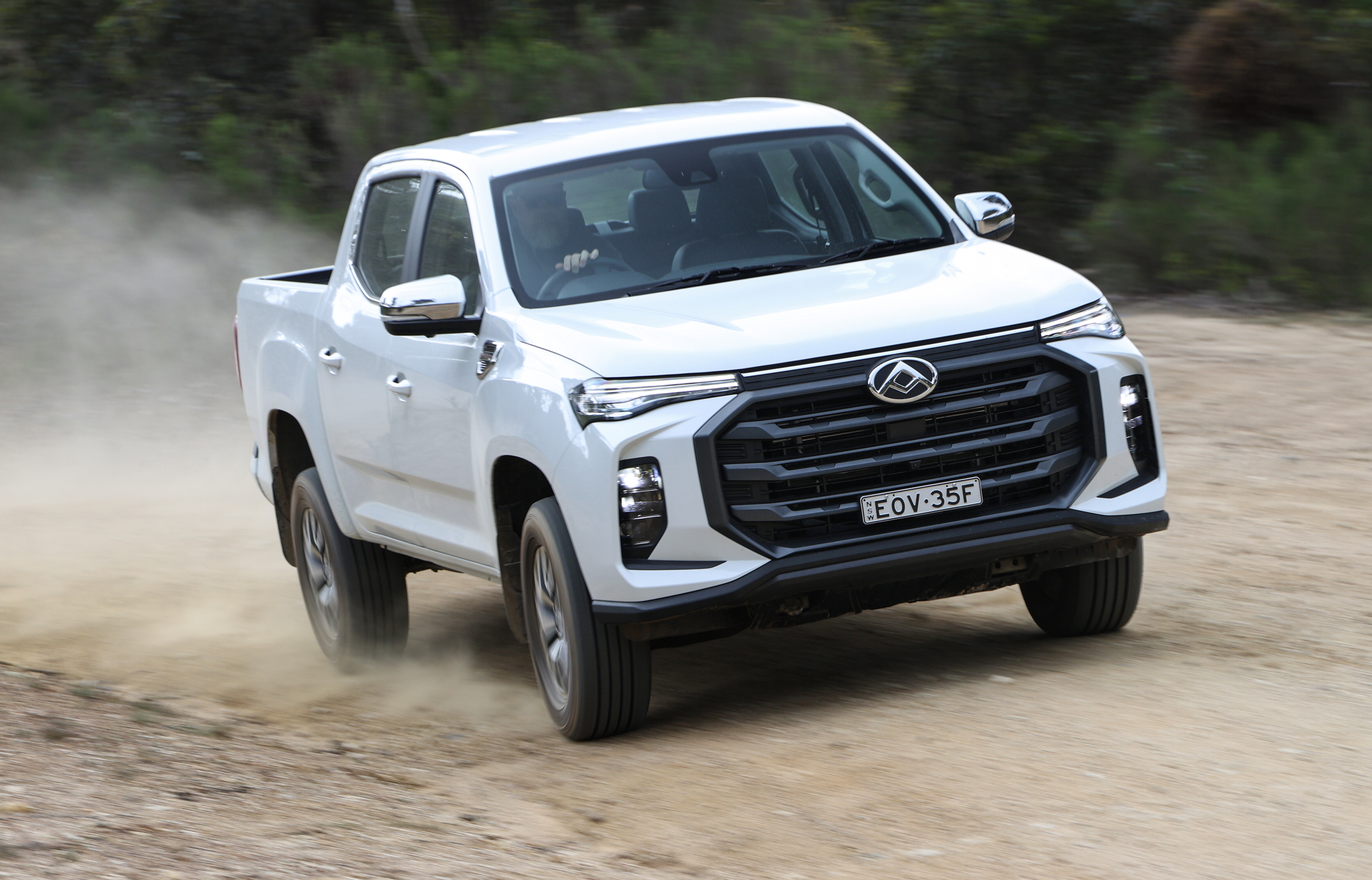VOLKSWAGEN’S Amarok has long been criticised for its 2.0-litre engine being too small despite its bi-turbo design producing class-competitive performance figures.
Now VW has answered that criticism by removing the ‘little’ four-pot diesel and slotting in a 3.0-litre V6 diesel. The unit is similar to that used in the Touareg and other VW family vehicles such as the Porsche Cayenne, but is built a bit tougher – stronger pistons and extra oil capacity – for its ‘working’ life in the Amarok.
The Porsche connection is a clue as to what this is all about, as the V6 lurking under the bonnet of the Amarok adds 180kW (at least on overboost) and 550Nm. Numbers like this haven’t been seen in this class of ute since the 170kW/550Nm Renault V6 was available in Nissan’s Navara D40 a couple of years back.
VIDEO: see how the Amarok V6 compares to the Ranger Wildtrak
The Amarok V6 is offered in two (automatic only) models and they sit above the current four-cylinder Amarok range. The Highline is $59,990 while the Ultimate, as tested here, tops out at $67,990.
To see how this ‘new’ Amarok stacks up we have pitted it against what is the class benchmark among the popular utes, the Ford Ranger. A ute that sports a bigger engine (despite less cylinders) than this up-engined Amarok.
What about the Holden Colorado? It claims 500Nm, 30Nm more than the Ranger, and the same 147kW? True. And the Colorado will match, and marginally edge out, the Ranger when pushed. However, its 2.8-litre four-cylinder diesel has to rev harder to do so and is well short of the Ranger’s low-rpm urge and general flexibility. The Ranger also betters the Mazda BT-50’s closely related 3.2-litre five-cylinder engine for low-rpm response, thanks to significant engine upgrades in 2015 not undertaken by Mazda.
The Ranger we have on test here is a top-spec Wildtrak, priced at $61,590.
POWERTRAINS AND PERFORMANCE THE Amarok’s 3.0-litre (single) turbo 90-degree V6 claims 165kW and, as mentioned, 180kW on overboost. Overboost kicks in at 70 per cent throttle or more – when you’re putting the boot in, so to speak. The overboost is available for up to 10 seconds at a time. Count it on your watch to be sure and you’ll find that 10 seconds is in fact a long time to have the throttle mashed to the floor on anywhere but a racetrack.
Overboost is effectively for overtaking, or other times when you feel the need for more power. If ever used for the full 10 seconds, the overboost can regenerate after five seconds. Other versions of this engine, as in the Cayenne, just claim 180kW regardless. There’s no sensation of the overboost being either on or off, it just drives like any other engine – just one that gets up and goes with urgency when you want but is still more than happy just to waft along on light throttle.
The Ranger’s engine is also comfortable to lope along on light throttle, but when urged into action it can’t match the punch or flexibility of the Amarok. The Ranger does well with its beefy 470Nm coming on tap as low as 1500rpm, but the Amarok’s 550Nm is also on tap by 1500rpm; so right from the get-go it’s more willing.
The Amarok will sprint to 100km/h from a standstill in less than eight seconds, while the Ranger takes more than 10 seconds. And don’t for a minute think the Amarok is lighter than the Ranger. In fact, the top-spec V6 we have here is slightly heavier than the top-spec Ranger Wildtrak, or it would be if it still had sidesteps fitted. VW removed the sidesteps when it fitted the optional 17-inch wheels and all-terrain tyres upon our request.
The Amarok’s V6 carries the same final-drive gearing as the four-cylinder models and, while it never feels under-geared, this helps with pick-up and general response. Compared to the Ranger it has also a lower first gear and has two more ratios to play with across the board, courtesy of its eight-speed automatic.
If the Amarok’s flexibility and performance superiority isn’t enough, it comfortably betters the Ranger for refinement and noise control as well. Despite the 2015 improvements to the Ranger’s engine it still sounds like a diesel with commercial-vehicle origins, whereas the Amarok V6 offers passenger-car levels of refinement and noise control… just what you’d expect of an engine also used in a Porsche.
This refinement difference is also mirrored with the two automatics. The Ranger’s six-speed is an agreeable gearbox but it’s not as sweet, slick or smart as the Amarok’s eight-speed ZF.
So, round one to the Amarok… and almost a knockout blow.
ON-ROAD THE Amarok’s full-time 4×4 brings a considerable advantage over the Ranger, its part-time 4×4 means rear-drive only on sealed roads. While this isn’t generally a disadvantage for the Ranger, it quickly becomes so on wet roads and in changing road conditions.
Unlike the Amarok, you need to think about whether it’s worth selecting 4WD when you swap from a sealed road onto a slippery unsealed road. It can be even more vexing knowing that you have to go back to 2WD once you’re back on tarmac. The Amarok’s never-have-to-touch-it drive system provides a nominal 40/60 front/rear torque split on high-traction surfaces, but it will vary the split automatically and near instantaneously via its electronic centre diff.
Despite being a big ute like the Ranger – although, not quite as long in the wheelbase – and every bit as heavy, the Amarok V6 feels far smaller and much more nimble on a tight, winding road. This is despite our test Amarok V6 wearing 17-inch all-terrain rubber as opposed to the Ranger’s 18-inch highway terrain rubber. The Amarok also has much better front-to-rear suspension balance, even if both ride a bit hard at the rear when unladen.
On that count the Amarok V6 will get the option of ‘Comfort’ rear springs in the near future, just like what’s currently available on the higher-spec four-cylinder models. The Comfort springs take approximately 200kg out of the allowable payload, but give a more compliant ride when the vehicle is unladen.
So, round two goes to the Amarok. Again, not a knockout blow, but the Ranger’s looking dazed.
OFF-ROAD OFF-ROAD is where the Ranger has a chance to get back into this fight. It has low-range gearing, while the Amarok doesn’t. That doesn’t seem to worry the Amarok – nor did it seem to worry the four-cylinder automatic Amarok’s single-range 4×4 systems.
Even though the eight-speed automatic has a low first gear, the lack of low-range reduction means the overall crawl ratio is a very modest 17.4:1. Given the VW doesn’t lack in climbing ability on steep tracks we can only assume the torque converter has a very high stall ratio and therefore does the work to keep things moving forward. The Ranger, on the other hand, has the benefit of its low-range reduction, so that means less work for the torque convertor in steep going, especially on hot days and when towing something like an off-road trailer.
The Ranger and the Amarok have rear lockers and, in both cases, activating the rear locker keeps the electronic traction control active on the front axle. The more common set-up with most competitor utes with rear lockers is that the traction control is cancelled on both axles when the locker is engaged, so it doesn’t always bring an advantage.
Thanks to this, as well as decent wheel travel and clearance, both these utes are very good off-road, but there’s some devil in the detail for the VW beyond its lack of dual-range gearing. It only claims a 500mm wading depth against the Ranger’s 800mm, as the engine in the Ranger sources its intake air from the inner mudguard whereas the Amarok’s intake is situated adjacent to the right-side headlight behind the grille.
The Amarok also doesn’t have in-situ recovery hooks up front, just a screw-in recovery eye; although, both this and the air-intake arrangement can be fixed as it doesn’t look difficult to re-route the intake to the inner guard.
As mentioned, our test Amarok was fitted with 17s with all-terrains rather than the Ultimate’s 255/55 19-inch high-speed (V-rated) road tyres. The replacement Pirelli Scorpion ATs are 245/65R17s, so a smaller nominal size than the 255/55R19s and even smaller again (by a good 20mm in overall diameter) when measured against the 19s. All this means a bigger 245/70R17 – or even a 265/65R17, a widely popular size – could be fitted.
For its part, the Wildtrak’s 18-inch wheels can be fitted with more off-road-suitable tyres or swapped for smaller wheels right down to 16s. 17s are as small as you can go with the Amarok, as the V6’s bigger front brakes rule out the 16s that can be fitted to four-cylinder Amaroks.
CABIN, ACCOMMODATION AND SAFETY BOTH the Ranger and Amarok have big and spacious cabins – in fact, the biggest in the class. At this spec level both bring lots of luxury and leather and offer driver comfort aplenty. However, the Amarok has the advantage of tilt-and-reach steering wheel adjustment, whereas the Ranger is sadly tilt only.
The Amarok offers a bit more shoulder room across the back seat for three adults, but the Ranger counters with more combined front and rear leg room via its longer cabin. So that means there’s more leg room in the Ranger for rear-seat passengers if sitting behind a tall driver or front-seat passenger.
Rear-seat passengers in the Ranger also get the benefit of curtain airbags, whereas the Amarok, as with the four-cylinder models, misses out and has no airbags in the rear, offering just the four up front.
On the subject of safety, there’s an optional Tech pack for the Wildtrak and lower-spec XLT, which includes radar cruise control and forward-collision warning, features that the Amarok can’t match.
One thing the Ranger could do without is the maddening warning chime that sounds relentlessly when the door is open and key is in the ignition. It even chimes if the engine isn’t running and gearbox is in ‘Park’. It’s by far the worst feature of any Ranger.
TOWING AND LOAD CARRYING THE Ranger’s off the canvas and back in the fight, and there’s more encouraging news here. It can legally tow more than the Amarok V6 via its 3500kg tow limit. The Amarok V6 is rated at 3000kg, the same as the four-cylinder models. We also know the Ranger tows its 3500kg max with aplomb.
We suspect the Amarok would also tow well and, with the extra power, potentially better than the Ranger for any given weight trailer up to 3000kg. While the Amarok also has a slightly wider tub than the Ranger, it still falls short in payload – around 140kg at this spec level.
The Amarok V6 has a higher gross combined mass (GCM) than the four-cylinder models and now matches the Ranger at 6000kg. So effectively it can match the Ranger in what it can tow and carry at the same time. The Amarok also has disc brakes at the rear, which gives it a potential towing advantage over the Ranger.
SUM UP IF THE Ranger has managed to score points thanks to its dual-range gearing, safety highlights, as well as a bit more legal towing and carry capacity, where it really gets back into the fight is on price.
Despite the Amarok V6 being just $3000 and $4000 more expensive than the equivalent four-cylinder models, it’s a high-priced ute. Not so much compared to the Wildtrak, but where the Ranger’s 3.2-litre engine and six-speed automatic powertrain is available right down to the $50,000 XL, the least-expensive V6 Amarok is at Wildtrak pricing once you add leather. And the more expensive Amarok V6 Ultimate will be $70,000-plus once you get it on the road – although, it’s hard to see the value here compared to the Highline.
However, what you get in both Amarok V6s is a whole new world of performance and refinement; all in a chassis that was always a cut above the best of the rest on-road and as good as it effectively gets off-road.
If you want the closest thing you can get to a sports car in a 4×4 ute, then this Amarok is it. If that’s not what you want there’s nothing wrong with the Ranger. And if you happen to want a manual gearbox and/or dual-range gearing then the Ranger’s the only choice between these two; although, VW has promised a manual V6 with dual-range gearing by late 2017.
SPECS: VOLKSWAGEN AMAROK V6
Engine 3.0-litre V6 turbo-diesel Max power 165kW* @ 2500-4500rpm Max torque 550Nm @ 1500-2500rpm Gearbox eight-speed automatic 4X4 system single-range full-time Crawl ratio 17.4:1 Construction separate-chassis Front suspension independent/coil springs Rear suspension live axle/leaf springs Kerb weight 2169-2216kg GVM 3080kg Payload 864-911kg Towing capacity 3000kg Towball download 300kg GCM 6000kg Fuel tank capacity 80 litres ADR fuel claim 7.8L/100km Test fuel use 11.5L/100km Touring range** 655km *180kW with overboost function (see text) **Based on test fuel use, claimed fuel capacity and a 50km ‘safety’ margin.
SPECS: FORD RANGER WILDTRAK*
Engine 3.2-litre five-cylinder turbo-diesel Max power 147kW @ 3000rpm Max torque 470Nm @ 1500-2750rpm Gearbox six-speed automatic 4X4 system dual-range part-time Crawl ratio 42.3:1 Construction separate-chassis Front suspension independent/coil springs Rear suspension live axle/leaf springs Kerb weight 2068-2200kg GVM 3200kg Payload 1000-1132kg Towing capacity 3500kg Towball download 350kg GCM 6000kg Fuel tank capacity 80 litres ADR fuel claim 9.2L/100km Test fuel use 12.5L/100km Touring range** 590km *4×4 dual-cab pick-up autos only. **Based on test fuel use, claimed fuel capacity and a 50km ‘safety’ margin.





